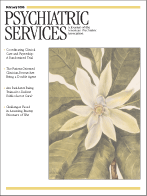Developmental Psychobiology, edited by B. J. Casey, Ph.D., and volume 23 in American Psychiatric Publishing, Inc.'s Review of Psychiatry series, is a good introduction for the mental health clinician who is interested in a wide array of topics, ranging from maternal-child attachment to facial processing to neurodevelopmental findings in schizophrenia. But be warned: this book is not for the research faint of heart.
There are definite variations throughout the text in how much and what type of basic science research is included and to what degree. Whereas the first chapter, "Developmental Psychobiology of Early Attachment," by Myron Hofer, M.D., sticks to less detailed research findings and attempts to do more synthesis, the last chapter, on neurodevelopment and schizophrenia, is so detailed that it may turn off any but diehard neuroanatomists.
Not to detract from the research itself, but it requires more involved reading. I personally found the first chapter most interesting of all, possibly because of my own research background in neuroendocrinology and brain development, and possibly because of the chapter's extensive referencing of the research of Michael Meaney, Ph.D., which I had followed during my graduate years. Meaney has spent the past couple of decades looking at how maternal behavior toward pups leads to long-lasting changes in those pups, mostly with regard to the HPA axis—the stress axis. The chapter goes on to describe more recent findings of Meaney's group that show how traits such as licking and grooming, which are known to decrease stress axis activation among adults, can be passed down from one generation to the next. This particular line of research is key to issues such as how abuse of one generation can lead to abuse of the next. For readers who have not been exposed to this research, this chapter gives an excellent introduction, as well as an introduction to other areas of research in this burgeoning area of transmission of traits from one generation to the next.
It is rather humbling to see how the seemingly lowly rat is shedding light on such complex behaviors as attachment. Not to take from the chapters that delve more into specific findings, which sometimes can border on minutiae, but these other chapters may be more suited to readers with a background in neuroanatomy. This book would probably be best suited for a department to share, as the individual chapters will likely appeal to different groups of people and not to one person alone.

